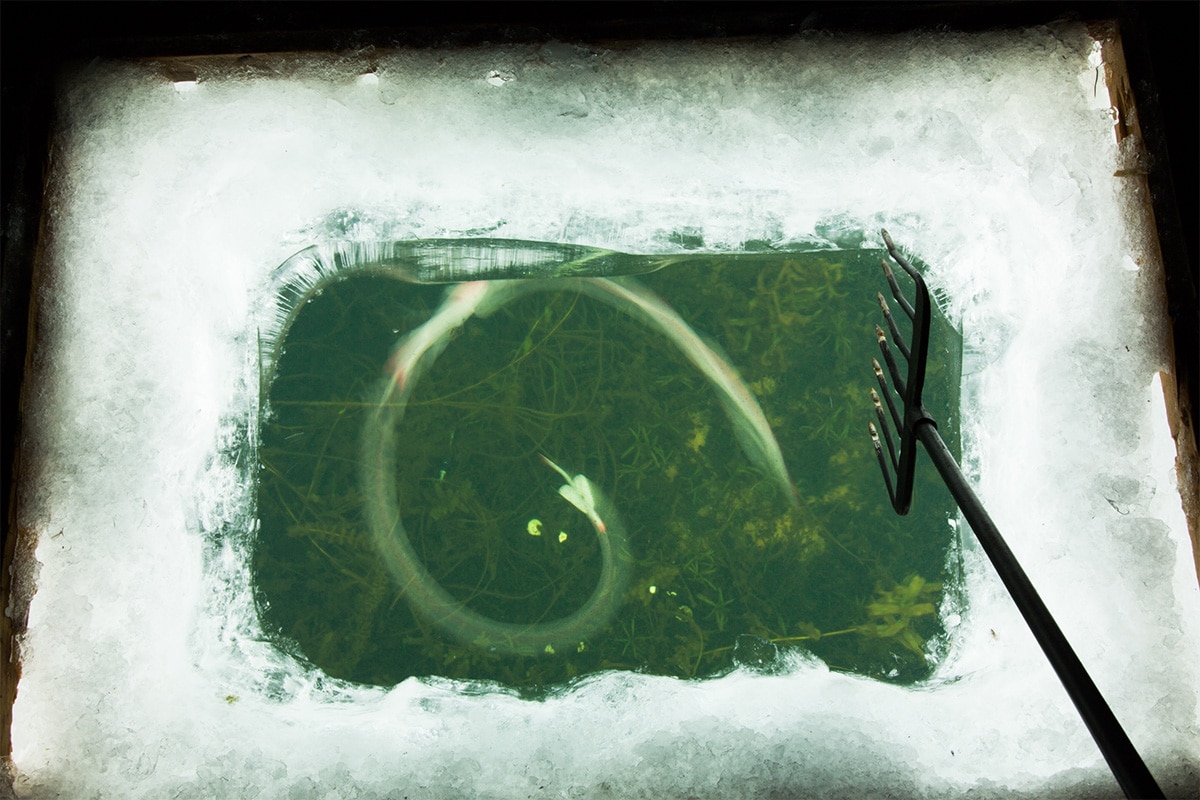Editor’s Note: This is the first installment of a multi-week series called Hardwater Hunters. Stay up-to-date on this series by providing us with your email address.
Hardwater Hunters
“Anyone can be a fisherman in May.”
The sentiment of the aging Cuban in The Old Man and the Sea captures the mentality of those who haul shelters onto frozen lakes each winter to spear fish through the ice. While the practice is generally referred to as “darkhouse spearing,” we’re going to refer to these dedicated souls as “Hardwater Hunters” as part of this new series here on Modern Carnivore.
To undertake this “hunt” for fish is to channel elemental skills of both hunting and fishing. As the angler, one must lure in their prey using an artificial or live bait, known as a decoy. Then, as the hunter, one must not hesitate to unleash primitive violence and pierce a living creature with a spear.
The Role of Predator
“You loved him when he was alive, and you loved him after. If you love him, it is not a sin to kill him. Or, is it more?”
It is possible to go fishing on open water and tip-toe around the violent natural patterns taking place beneath the surface. We can use artificial bait. We can practice catch and release. On the other hand, full participation in darkhouse spearing demands that you embrace the role of predator. The human harvests a fish who is, at that very moment, seeking a kill to sustain themselves.
The reward for the human is similarly primal. The fish provides us with fillets for fish fries, bones for stock, trimmings for pickled fish, and caviar for crackers.
Ancient Traditions
“But then, nothing is easy.”
Darkhouse spearing for fish is steeped in traditional practices. The First Nations of North America speared through the ice long before European contact. Many spear makers learned blacksmithing from their fathers and grandfathers and still fashion spears in home forges with hammer and anvil. Decoys can take days to create and are more intricately detailed than the priciest of musky lures.
Preamble to even seeing a fish is transporting the tools, shelter, heating, and fishing equipment out to a spot believed to hold fish. Then, a large rectangular hole is cut, large chunks of ice are wrestled out of their hold, the hole is cleaned, and finally a shelter is placed over the hole. Only then are we rewarded with the chance to stare into six square feet of lake bottom, and hoping for that first fish to be drawn in.
A Different Kind of Patience
“My big fish must be somewhere.”
All types of fishing demand patience. But, when the angling gets slow, one can glance at the shoreline, look at the birds overhead, or simply cruise to a different spot on the lake. Hunting for fish in a darkhouse requires much more patience. There are long periods of no change on that particular small piece of hard water. Our minds wander, and we question everything we just did: the location, the decoy, the depth of the decoy, how much we are swimming the decoy, time of year.
Each decision is subject to endless internal agonizing.
Then, in an instant, the questioning and boredom evaporate. There is no feeling to match the exhilaration of seeing a fish appear, in slow ambush of the decoy.
Forget all doubts. Reach for your spear.
All quotes in this post are from The Old Man and the Sea, by Ernest Hemingway which won the Pulitzer Prize for Fiction in 1953.
Stay up-to-date on this series by providing us with your email address.


